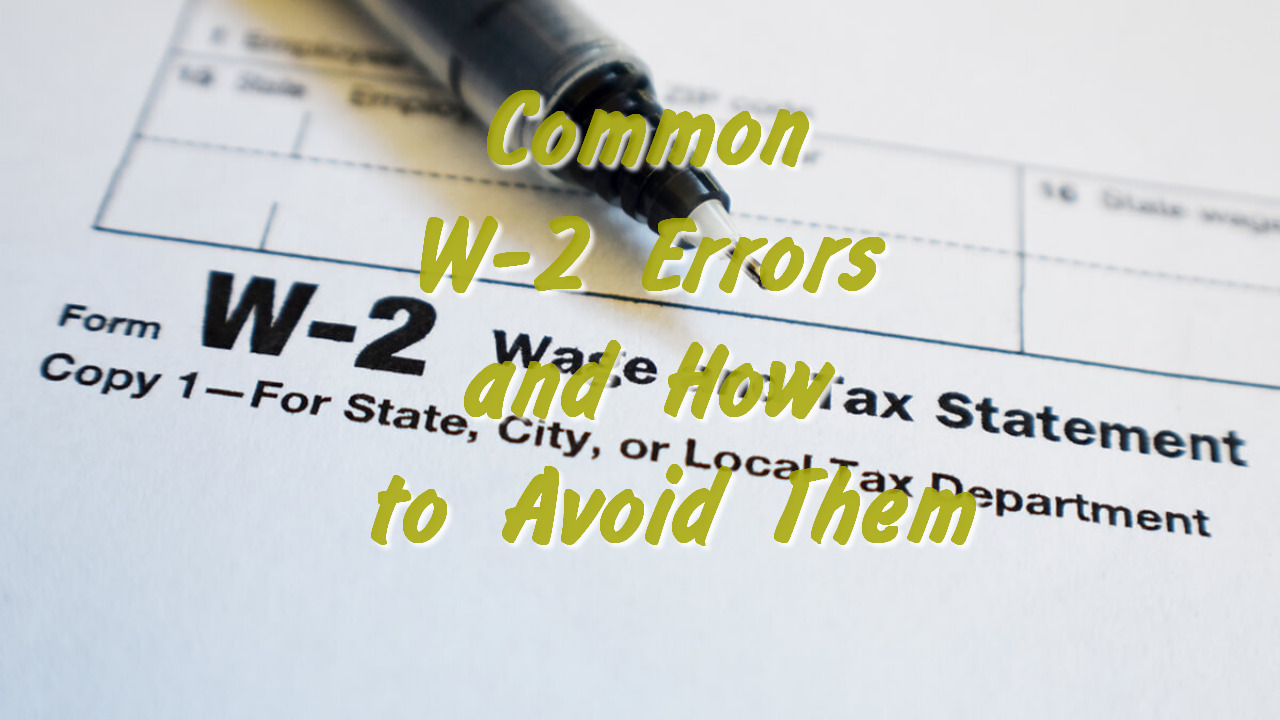As tax season approaches, employers and employees alike brace themselves for the task of filing taxes and issuing W-2 forms. The W-2 form, alternatively referred to as the Wage and Tax Statement, holds paramount importance as it discloses an employee’s yearly earnings and tax withholdings. Nevertheless, owing to its intricacy and the potential for mistakes, errors on W-2 forms can cause considerable headaches for both employers and employees. In this article, we will delve into four typical W-2 errors and offer comprehensive guidance on steering clear of them.
Incorrect Personal Information

One of the most prevalent errors on W-2 forms is incorrect personal information. This could include misspelled names, inaccurate Social Security numbers, wrong addresses, or even incorrect employer identification numbers (EIN). Such errors can lead to delays in tax processing and, in extreme cases, may result in penalties from tax authorities. To avoid this error, it is crucial for employers to double-check the information they have on file for their employees. Regularly updating employee records and verifying personal details can help prevent these errors from creeping into W-2 forms. Furthermore, employers should encourage employees to promptly report any changes in personal information to ensure accurate data is used for tax reporting. To avoid any errors, create a W-2 form with paystubs.net.
Inaccurate Income Reporting

Another common W-2 error stems from incorrect income reporting. This might arise from mistakes in calculating wages, bonuses, commissions, or other forms of compensation. Additionally, fringe benefits or non-cash items may be inaccurately reported, leading to discrepancies in taxable income.
To avoid this error, employers must ensure that their payroll systems are accurate and up to date. Regular reconciliations between payroll records and financial statements can help identify any discrepancies before issuing W-2 forms. Utilizing automated payroll software can also reduce the likelihood of manual errors in income reporting.
Miscalculated Tax Withholdings
Miscalculated tax withholdings are a significant concern for both employers and employees. If tax withholdings are too high, employees may receive smaller paychecks throughout the year, while too-low withholdings can result in a hefty tax bill during tax season.
To avoid this error, employers should regularly review and update their payroll systems to reflect the latest tax laws and regulations. They should also encourage employees to review their withholding allowances on Form W-4 and make adjustments if necessary. Providing employees with access to tax calculators and resources can help them better understand and manage their tax withholdings.
Failing to Meet the Deadline

Late or missing W-2 forms are a serious issue that can lead to penalties from tax authorities. Employers are required to furnish W-2 forms to their employees by January 31st each year. They must also file copies with the Social Security Administration (SSA) by the same deadline.
To avoid missing the deadline, employers should establish a well-organized system for preparing and distributing W-2 forms. Setting reminders well in advance and allocating sufficient time for the process can help ensure timely compliance. Employers should also consider e-filing the W-2 forms with the SSA, which can streamline the filing process and reduce the likelihood of errors.
Conclusion
The W-2 form is a critical document that demands accuracy and attention to detail. By being aware of these common W-2 errors and implementing proactive measures, employers and employees can confidently navigate tax season. Accurate and timely W-2 reporting not only avoids penalties but also fosters a positive relationship between employers and their workforce, as employees appreciate the effort to provide them with reliable tax information. Remember, prevention is always better than correction when it comes to W-2 errors.
